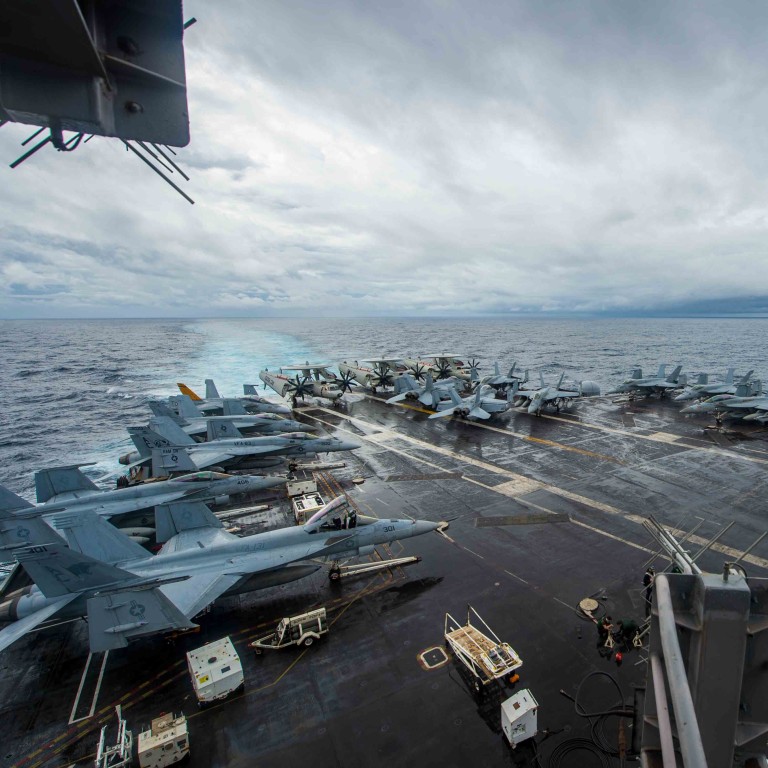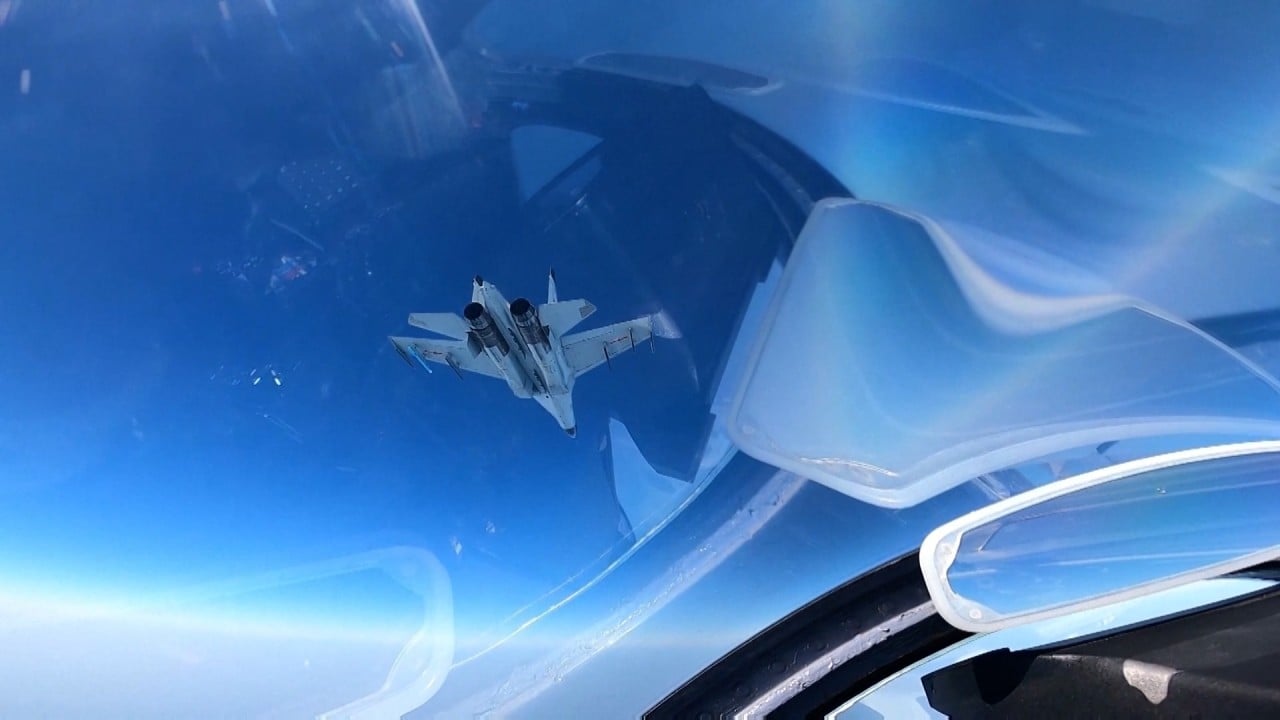
South China Sea: how the US Navy aims to better home in on targets
- An American aircraft carrier strike group has been training personnel on the ground to help guide missiles
- The exercise also involved Nato communications, to allow American forces to integrate with allies
In a drill in early February, the USS Dwight D. Eisenhower aircraft carrier strike group sent US Navy Seal teams as well as a boat squad to establish forward bases to supplement intelligence from the strike group’s radars. Virtual warfare missions were also part of the exercise.
During the training, various vessels were used to get closer to simulated enemies and a number of units were mobilised for “mutual fire support”, according to Rear Admiral Scott Robertson.
Du Wenlong, a researcher at the PLA Academy of Military Sciences, said the Seals could be used to gather intelligence to help with air strikes.
“If the Seals were deployed to an island, either from air or by boat, and to conduct various reconnaissance to locate targets, this information can help the strike group better attack targets and boost their strike precision,” Du told state broadcaster CCTV.
South China Sea: the dispute that could start a military conflict
The exercise was also significant in that it was the first time that Nato procedures and communication methods had been used to train US crews, a move designed to allow American forces to integrate with allies.
USNI News, the US Naval Institute’s online news service, reported that the drill was designed to forge stronger links with military allies so that forces could conduct a range of operations across various sites.
“Fleet integration and finding ways to increase fleet lethality are big priorities for our community right now,” Captain Don Wetherbee was quoted as saying.

01:37
China’s PLA conducts air force drills after US warships sail in contested South China Sea
The exercise comes as tensions between China and the United States persist in the South China Sea, a strategically important area through which much of the world’s trade passes.
The tensions increased during the previous US administration and are expected to continue under the presidency of Joe Biden.
Su Xiaohui, an international and strategic studies specialist from the China Institute of International Studies, said the countries were conducting these activities to try to expand their influence in the South China Sea.
“The interest of US allies in the South China Sea has increased in the Biden era. One reason is because the South China Sea is an important waterway for commercial passage, while another reason is these countries can add their weight to policy related to the South China Sea,” Su said.
Beyond the US and China, European powers in the South China Sea will be a key focus of the dispute this year
Timothy Heath, a senior defence analyst from the Rand Corporation, said that while the US exercise was designed more to counter Russia, the strategies in the exercise could be applied to other maritime combat scenarios, including ones involving China.
Heath said the naval exercise could improve US missile strike capabilities by using special forces troops, who could be sent to a front line well ahead of the warship to locate and identify targets.
“This should also help improve the survivability of the same warships, since they will be able to launch their missiles from a longer distance,” Heath said.
Collin Koh, a research fellow at the S. Rajaratnam School of International Studies at Singapore’s Nanyang Technological University, said that after years of modernisation the Chinese military had caught up and even surpassed the United States in some areas, and the US was responding.
“The PLA’s missile threat to the US … plays a huge role in the US Navy’s efforts to adjust its forces including in the realm of missile defence,” Koh said.

02:32
Washington’s hardened position on Beijing’s claims in South China Sea heightens US-China tensions
And on Tuesday, a Chinese coastguard ship was reported to have followed the US destroyer USS Impeccable near the Scarborough Shoal, which is controlled by China but also claimed by the Philippines. The ship had also conducted close-in surveillance on an oilfield operated by Vietnam that China deems illegal.
Heath said the stand-off between China and the US would continue as both sides ramped up combat strength and conducted patrols and exercises in the region.
“It would be helpful if both sides could at the same time step up efforts to establish risk reduction measures and safety protocols, which could help stabilise the situation, but whether they will do so remains unclear,” he said.

